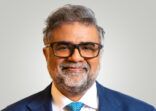The BRICs acronym (Brazil, Russia, India and China) was coined by Goldman Sachs’ economist Jim O’Neill in 2001 to represent a group of powerhouse countries that would drive global growth. BRICs became an investible theme with Goldman and others launching BRIC funds.
But the BRICs have since crumbled. Sharply diverging economies, split further apart by plunging oil prices and governments that have rolled out serious structural reforms, show that the BRICs have little in common.
Some analysts, like Kevin Gardiner, Rothschild Wealth Management’s global investment strategist, said treating the BRIC nations as a single investment bloc “was a triumph of marketing over economic analysis”.
Koch, who has worked closely with O’Neill over the years, disagrees.
“We can answer that by looking at what we advise clients to do with their capital,” Koch told FSA on a recent trip to Hong Kong. “We recommend putting at least 10% of equity assets into the global emerging markets, and BRICs should be 50% of that [10%]. We continue to think they are very important in terms of global growth and equity market returns.
“If you invest in global emerging market funds, you’ve got a lot of BRIC exposure. In fact, about 50% of the global EM universe is BRICs,” Koch, who is based in New York, told FSA during a recent trip to Hong Kong.
Koch declined to say specifically whether she believes the BRIC countries continue to be a standalone investment theme on their own.
“BRICs will continue to be an investment theme, and some of our clients may want to overweight those countries individually or together. Our asset allocation recommendation for our clients is to have a strategic allocation to broader emerging markets, which include the BRIC countries.”
In an SEC filing last November, the firm said it merged its Goldman Sachs BRIC Fund into a broader emerging markets fund to “eliminate overlapping products”.
EM consumer plays
Koch, who leads who leads a team of international portfolio managers, said in emerging markets she is overweight consumer areas given the favourable demographics and the rise of the consumer.
Financials also get an overweight and the firm particularly likes EM stock excahnges. But the banking sector gets an underweight.
“Why do we own stock exchanges? First, it is really about the business models,” Koch said. “They have great business models because they are generally monopolies, which means that they have pricing power. In addition, they are asset-lite. They need a very limited number of people. Most of the stock exchanges have already [invested] to build out technology.
“As long as trading volumes are healthy, you have close to 100% of conversion of earnings to cash flow and that’s the number one metric that we look across all emerging markets — free cash flow generation..”
On the other hand, she is underweight commodities, materials and energy sectors given the price concerns. Telecommunications is a very competitive sector with no pricing power, she added.
















